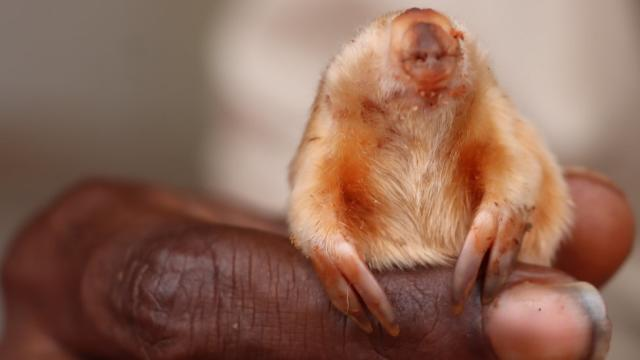In the heart of the Australian outback, a remarkable discovery has emerged: an exceedingly rare, sightless marsupial mole, known as the northern marsupial mole or kakarratul, has been sighted and photographed. These elusive creatures inhabit one of the nation’s most remote regions, their numbers shrouded in mystery due to their scarcity.
Measuring only palm-sized, these creatures possess a distinctive appearance with their silky golden fur, lack of eyes, stumpy tail, and flipper-like hands. Sightings of marsupial moles are exceptionally infrequent, occurring only a handful of times each decade.
This recent sighting occurred in the Great Sandy Desert, approximately 1,500km (932 miles) from Perth, by the Kanyirninpa Jukurrpa Martu rangers, Aboriginal custodians of the land who employ traditional knowledge to care for their territory.
Gareth Catt, a desert wildlife expert, emphasizes the enigmatic nature of these burrowing animals, highlighting their near-invisibility as they navigate beneath the sand. Their survival tactics involve minimal surface exposure, often referred to as “swimming” through the sand, necessitating unconventional survey techniques such as digging trenches and channels to locate their subterranean dwellings.
The scarcity of information surrounding these cryptic creatures intensifies the significance of this sighting, marking the second within a span of six months. Mr. Catt underscores the richness of desert biodiversity, showcasing the adaptability of its inhabitants, from bilbies with their distinctive heat-regulating ears to thorny devils utilizing spikes for water collection.
However, many of these desert-dwelling species remain inadequately researched, highlighting the urgency for further investigation to ensure their preservation amidst the challenges posed by climate change.
In Mr. Catt’s words, “At the most extreme ends of the environment, it becomes really obvious when things change – that’s what we’re seeing in the desert.” This underscores the heightened vulnerability of species residing on the environmental fringe, necessitating concerted efforts for their protection and conservation.

